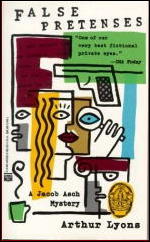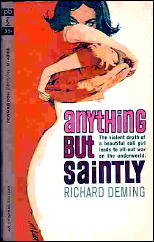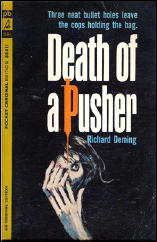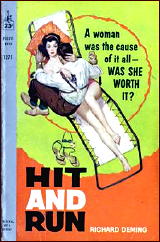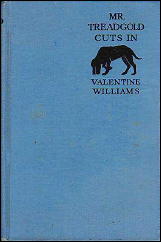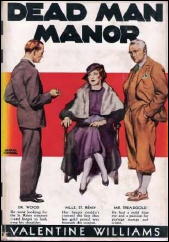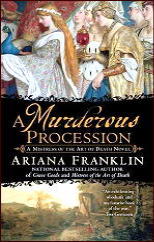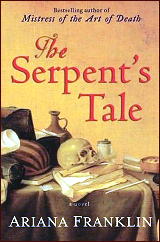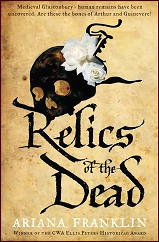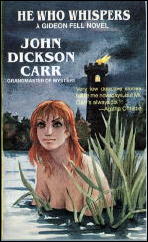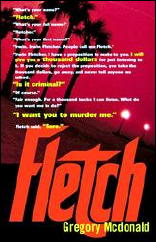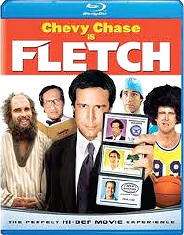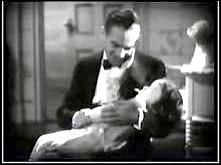IT’S ABOUT CRIME
by Marvin Lachman

— Reprinted from
The MYSTERY FANcier,
Vol. 11, No. 4, Fall 1989.
… Carroll & Graf has also reprinted John Dickson Carr’s historical mystery, The Demoniacs (1962). This is not top-class Carr; the murder method is unconvincing, and there are too few suspects. Also, many characters are given the annoying habit of answering questions with questions.
Still, London in 1757 comes remarkably alive, and we learn a great deal about the famous mercenary thief-takers of the time, through the hero, Jeffrey Wynne, “the only honest Bow St. Runner.” Also interesting is Carr’s description of a massage parlor, written a few years before they became so popular in the sleazy areas of our cities.

Proof of Carr’s popularity is that two other publishers are also reprinting his work. Harper’s Perennial Library has just issued four books, and only one is in any way weak.
The Four False Weapons (1937) is the last and weakest of Carr’s Henri Bencolin series, and it could have used a less muddled solution, as well as a diagram of the hard-to-picture murder house. The characters and their emotional responses are so implausible they prove distracting.
However, Carr is at or close to his best in the three Gideon Fell books from Perennial. The Mad Hatter Mystery (1933) is chronologically the second Fell book, and who can resist its bizarre plot, with top hats being stolen all over London?
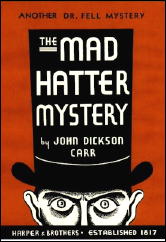
One hat turns up on the head of a corpse found in the Tower of London, a building whose physical aspects are important to the plot. The book is also about an unknown Poe manuscript which supposedly predates “Murders in the Rue Morgue.”
Carr even provides this poignant description of the unhappy Poe: “Never in his life would that dark man have anything, but dreams to exchange at last for the cold coin of an immortal name.”
Long ago in these pages (Vol. 2, No.3, May 1978), I wrote an article about Carr in which I described how he usually had a character who embodied much of his own history and traits and acted as Watson to Dr. Fell’s Holmes.
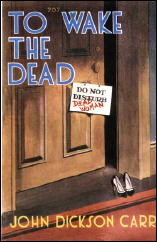
Christopher Kent in another Perennial reprint, To Wake the Dead (1938), is one of Carr’s most appealing of these secondary players, a mystery writer who finds a corpse in a London hotel who turns out to be his cousin’s wife. So strong are Carr’s narrative powers in this book that we accept coincidences we might not take from lesser suspense writers.
The Case of the Constant Suicides (1941) is one of the three best Fell books, high praise indeed. (The very best of the Fells, The Crooked Hinge [1938], was reprinted by Perennial in the summer of 1989 and is still available.)
Constant Suicide’s hero is, like Carr, an American in the British Isles. Alan Campbell’s train journey to Scotland, in which he meets an attractive, mysterious woman (also named Campbell), is a near perfect beginning. The setting, a castle in the Highlands, and the intricate murder puzzle also could hardly be improved upon.
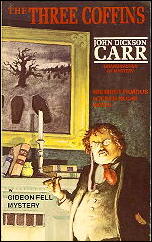
IPL has no fewer than twenty Carrs in print, including nine as Carter Dickson, and I am tempted to take the easy road and merely recommend all of them. Well, I do recommend them all, but I will select some favorites among them:
Seldom have atmosphere and puzzle been more happily married in a mystery than in Hag’s Nook (1933), the first and one of my three favorite Fells. The Three Coffins (1935) is arguably Carr’s most famous book, and because of its famous lecture chapter is probably the seminal work on locked rooms. Though Barzun and Taylor detested it, the exotic Below Suspicion (1949) is one of the best of the “later” Carrs.
It may be sacrilege, but in general I prefer the books Carr wrote as Dickson. The puzzles were as good, and Carr wrote some hilarious scenes of slapstick, usually for the entrance upon the scene of the “Old Man,” as his detective, Sir Henry Merrivale, calls himself.
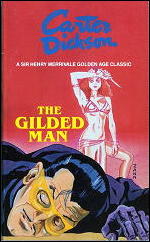
In He Wouldn’t Kill Patience (1944), my favorite of all Carr’s seventy-plus books, we meet him being chased around the reptile house by a large tropical lizard. This ingenious “locked zoo” mystery is enhanced by a cast of magicians — and the background of London blacked out in the “blitz.”
In The Reader Is Warned (1939) Merrivale solves a murder with impossible elements, though not in a locked room. We also have Merrivale driving a train and hitting a cow. Why is HM driving a train and how did the beast get on the tracks? That’s a bonus to the mystery, if you read the book.
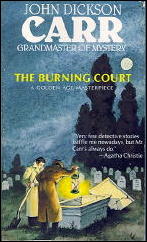
The Gilded Man (1942) is one of the most enjoyable weekend-house-party mysteries ever written. Besides a wild and wickedly clever puzzle, there is Merrivale, as a substitute magician and mixing axioms. “The cat’s been at the spilt milk. There’s none left to weep over.”
One more Carr from IPL must be mentioned, a non-series entry, the justly famous The Burning Court (1937). Ordinarily, when an author introduces elements of the supernatural into a mystery, I shout “Cop-out” and throw the book aside. Carr not only does it in this book, along with some non-science-fictional time travel, but he had me eating out of his literary hand and loving it.
